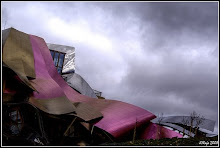skip to main |
skip to sidebar
Key French Revolution terms

- Constitutions of 1791- established constitutional monarchy, under which the unicameral Legislative Assembly would pass legislation but the king of France would retain a veto. With war beginning and with increasingly radical -- and ultimately republican -- forces coming to the fore in the Assembly, this proved entirely unworkable. The August 10th insurrection was the effective end of the monarchy in France.
- Departments- created on January 4, 1790 by the Constituent Assembly to replace the country's former provinces with a more rational structure. They were also designed to deliberately break up France's historical regions in an attempt to erase cultural differences and build a more homogeneous nation. Most departments are named after the area's physical features.
- Neoclassicism- visual arts movement in Europe.
- Assignats- were banknotes issued by the National Constituent Assembly during the French Revolution. The assignats were issued after the confiscation of church properties in 1790 because the government was bankrupt. The government thought that the financial problems could be solved by printing certificates representing the value of church properties. These church lands became known as biens nationaux. These documents evolved into paper currency.
- Emigres- French nobility that fled France during the French Revolution into neighboring countries. There they began a counter revolution.
- Declaration of Pillnitz- a statement issued at the Castle of Pillnitz in Saxony by Emperor Leopold II and Frederick William II of Prussia. It called on European powers to intervene if Louis XVI was threatened; this declaration was intended to serve as a warning to the French revolutionaries, to allow his restoration to power. The statement helped begin the French Revolutionary Wars.
- Girondists- 12 deputies. Group of politics in France within the Legislative Assembly and the National Convention during the French Revolution. The Girondists were a group of individuals holding certain opinions and principles in common rather than an organized political party.
- Sans – culottes- Revolutionaries of the third estate that wore full length pants rather than the short, Culottes worn by the nobility. The culottes were seen as a symbol of inequality in France.
- Olympe de Gouges- French writer that wrote a feminist version of the Declarations of the Rights of men to include the rights of women. She was executed by the guillotine because of other Revolutionary ideals.
- Jacques Louis David – Celebrated Neoclassic French artist during the French Revolution.
- Chapelier Law- Law passed in the first phase of French Revolution by the National Assembly that banned Guilds.
- Civil Constitution of the Clergy- a legal action that reorganized the clergy in French government.
- Flght to Varennes - In June 1791 Louis XVI, with his immediate family, tried to escape to the nearest friendly border. He was recognized and arrested in the town of Varennes near the Austrian borer. The royal family was escorted back to Paris.
- Jacobins- Political party during the French Revolution, its most prominent member being Robespierre.
- September Massacres – in the late summer of 1792, as a response to the warning that vowed to destroy Paris if the French royal family was harmed, thousands of Parisians rioted killing more than half of the political royalist prisoners at the time. More than 1200 died in the riots.



No comments:
Post a Comment